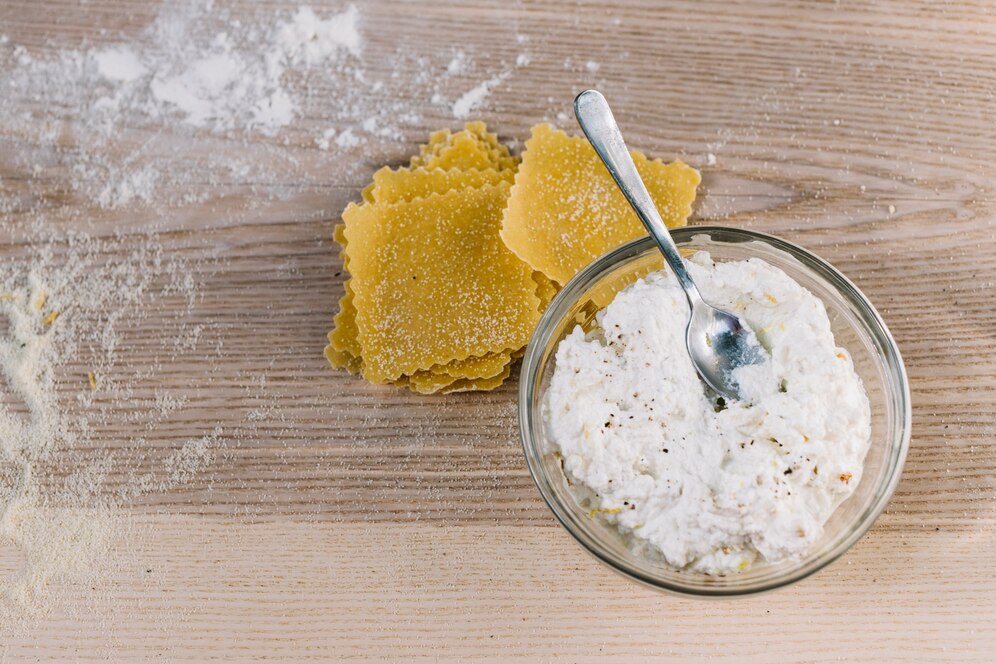Harina PAN: A Complete Guide to Its Origins, Uses, Nutrition, and Culinary Magic
Harina PAN, a pre-cooked corn flour originating from Venezuela, has grown into one of the most influential ingredients in Latin American cooking. It may appear simple at first glance just a fine, pale corn flour but behind that simplicity lies a rich culinary history, a deep cultural identity, and remarkable versatility. From hearty breakfasts to festive holiday dishes, Harina PAN holds a cherished place in millions of kitchens across the world.
This detailed guide explores the birth of Harina PAN, its cultural importance, varieties, nutritional strengths, and the many ways it elevates both traditional and modern recipes. Whether you are discovering Harina PAN for the first time or looking to deepen your knowledge, this expanded article offers everything you need to appreciate this extraordinary ingredient.
The Origins and Evolution of Harina PAN
Harina PAN was created in the 1960s by Empresas Polar, one of Venezuela’s leading food manufacturers. At that time, preparing corn dough for everyday dishes like arepas involved long, labor-intensive steps. Cooks first had to soak dried corn kernels, then grind and cook them before kneading them into dough. The process demanded patience, skill, and time luxuries many families began having less of as lifestyles changed.
The arrival of Harina PAN transformed this landscape. For the first time, people could enjoy beloved traditional dishes without going through the entire grain-processing ritual. By introducing a pre-cooked, ready-to-mix corn flour, Empresas Polar made traditional cuisine more accessible, especially for busy households.
Very soon, Harina PAN became more than a convenience product became a symbol of culinary identity. Families across Venezuela, Colombia, and other Latin American countries adopted it enthusiastically, and its popularity grew alongside the diaspora. Today, Harina PAN is found in supermarkets on every continent, proof of its universal appeal.
Cultural Significance Across Latin America
In many Latin American countries, Harina PAN is far more than a pantry staple—it represents comfort, heritage, and home. The dishes made from this flour are deeply tied to culture, tradition, and family rituals.
For example:
- Arepas are a daily breakfast dish in Venezuela and Colombia.
- Hallacas are made during Christmas and symbolize family unity during the long preparation process.
- Empanadas made with corn dough are often sold by street vendors and enjoyed as snacks or quick meals.
Using Harina PAN is not simply about convenience; it is about preserving the flavors and memories passed down through generations. The act of preparing dough, shaping it, and sharing meals brings families together, making Harina PAN an emotional as well as culinary ingredient.
Varieties of Harina PAN and Their Unique Features
Harina PAN comes in several varieties, each offering different flavors, colors, and textures. These variations allow cooks to experiment and adapt recipes based on the dish they wish to prepare.
White Harina PAN
White corn flour is the classic and most widely used version. It has a subtle taste and soft, fine texture, making it ideal for:
- Arepas
- Traditional Venezuelan empanadas
- Corn cakes
- Light dough-based dishes
Its neutral flavor makes it a perfect base for both savory and sweet recipes.
Yellow Harina PAN
Made from yellow corn, this variety has:
- A richer aroma
- A slightly sweeter flavor
- A vibrant golden color
This flour is especially favored for recipes that benefit from a stronger corn taste, including certain empanadas, tamales, and Caribbean-style dishes.
Mixed and Specialty Flours
Over time, Empresas Polar introduced blends and specialty versions catering to modern tastes and dietary needs. Some examples include:
- Fiber-enhanced Harina PAN
- Sweet corn varieties
- Blends incorporating whole grain or mixed corn types
These options broaden the culinary possibilities, supporting both traditional cooking and experimental fusion dishes.
Nutritional Composition and Health Benefits
Although Harina PAN is beloved for its taste and convenience, its nutritional value is equally impressive. Below is a helpful table summarizing the typical nutritional profile per serving.
Nutritional Breakdown of Harina PAN (Per ¼ Cup / 30g)
| Nutrient | Approximate Amount | Benefit |
|---|---|---|
| Calories | ~150 kcal | Provides energy for daily activities |
| Carbohydrates | ~33 g | Main energy source; supports physical activity |
| Protein | ~2 g | Supports muscle maintenance |
| Fat | ~1.5 g | Very low; suitable for low-fat diets |
| Fiber | Moderate | Supports digestion and gut health |
| Vitamin A | Present (fortified) | Important for vision and immunity |
| Iron | Present (fortified) | Helps prevent iron-deficiency anemia |
| Calcium | Present (fortified) | Supports bone health |
| Gluten | 0 g (naturally gluten-free) | Safe for gluten-sensitive individuals |
Health Advantages
1. Naturally Gluten-Free
Since Harina PAN is made entirely from corn, it contains no gluten. This makes it a safe and valuable ingredient for people with:
- Celiac disease
- Gluten intolerance
- Wheat allergies
2. Rich in Complex Carbohydrates
The flour provides long-lasting energy, making it ideal for:
- Breakfast dishes
- Athletes
- Growing children
3. Supports Digestive Wellness
The fiber content assists in:
- Improving digestion
- Preventing constipation
- Maintaining gut balance
4. Packed with Essential Micronutrients
Fortified versions offer vitamins and minerals critical for healthy bodily functions. This is especially beneficial in communities with limited access to diverse foods.
Culinary Uses: From Tradition to Innovation
Harina PAN’s greatest strength lies in its adaptability. It consistently performs well in both traditional recipes and cutting-edge fusion cuisine.
Traditional Recipes Made With Harina PAN
Arepas
The most iconic dish associated with Harina PAN, arepas are round corn cakes enjoyed stuffed or plain. They can be:
- Grilled
- Baked
- Fried
Popular fillings include:
- Queso fresco
- Shredded beef (carne mechada)
- Chicken salad
- Black beans and avocado
Their versatility makes them suitable for breakfast, lunch, dinner, or even a quick snack.
Empanadas
Corn-based empanadas feature a crispy crust with soft, flavorful fillings, such as:
- Ground beef
- Cheese
- Potato
- Chicken
Harina PAN provides a smooth dough that fries beautifully without cracking.
Hallacas
This labor-intensive Venezuelan holiday dish resembles tamales. The dough, made from Harina PAN, wraps a savory filling containing:
- Pork
- Beef
- Chicken
- Raisins
- Olives
The parcels are wrapped in plantain leaves and steamed, creating a rich and aromatic festive dish.
Modern and Global Culinary Creations
As global cooks discover Harina PAN, its uses have expanded far beyond Latin America. Today, chefs employ it in a wide variety of dishes, including:
- Gluten-free breads
- Muffins and cakes
- Pizza crusts
- Pancakes
- Thickening agents for soups and stews
- Fusion appetizers combining Asian, Middle Eastern, or European flavors with Latin textures
The mild taste of Harina PAN blends well with many ingredients, making it a favorite for experimentation.
Cooking Techniques for Perfect Results
Although Harina PAN is simple to use, mastering its dough involves attention to detail.
Basic Preparation
To prepare basic dough:
- Add Harina PAN to a bowl.
- Gradually pour in water.
- Add salt.
- Mix gently until a smooth dough forms.
- Let the dough rest for a few minutes before shaping.
This resting period allows the flour to absorb moisture fully, resulting in a pliable, smooth dough.
Advanced Techniques
More complex recipes require additional skill, for example:
- Achieving ultra-thin empanada shells without cracks
- Mixing dough with spices or herbs for enhanced flavor
- Crafting layered dishes like hallacas, ensuring even dough thickness
Tips for Best Results
- Do not add all the water at once gradual mixing prevents overly sticky dough.
- Rest the dough to improve texture and prevent dryness.
- When frying, ensure oil is hot to avoid greasy results.
- When baking arepas, lightly oil the surface for a beautiful golden crust.
Harina PAN in International Cuisines
Though deeply rooted in Latin America, Harina PAN has crossed borders and now contributes to a global culinary language.
In Latin America
Countries like Venezuela, Colombia, Ecuador, and Panama use Harina PAN in daily cooking. Each place adds its own cultural twist, showcasing regional creativity.
In the Caribbean
Islands such as Puerto Rico and the Dominican Republic use Harina PAN in dishes like:
- Almojábanas
- Corn fritters
- Funche (corn porridge)
Its adaptability makes it a favored ingredient in Caribbean cuisines.
In Global Fusion
International chefs use Harina PAN to create:
- Corn-flour sushi rolls
- Arepa sandwiches with Italian fillings
- Corn dumplings inspired by Asian cuisine
- Mediterranean-style arepas with hummus and falafel
This fusion trend continues to grow, proving Harina PAN’s limitless potential.
Conclusion
Harina PAN is far more than a simple corn flour it is a culinary treasure that bridges tradition and innovation. Its origins tell a story of cultural pride and practicality, while its flavors create warm memories at every table. Whether used in classic recipes like arepas and hallacas or in bold, modern creations, Harina PAN remains a symbol of nourishment, heritage, and creativity.By inviting Harina PAN into our kitchens, we also invite the flavors, stories, and traditions of Latin America. With every dish made from this humble flour, we honor generations of cooks while exploring endless new possibilities in global cuisine.







